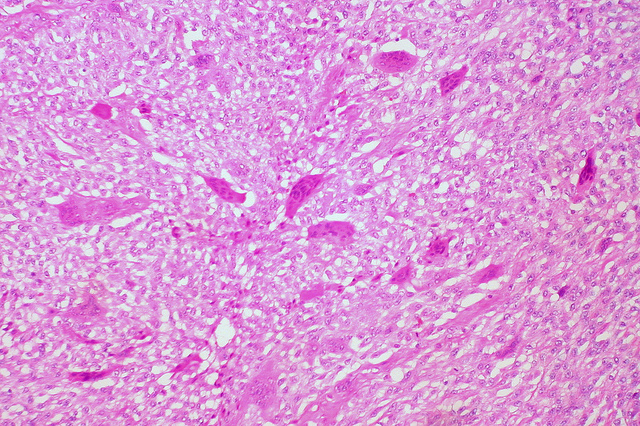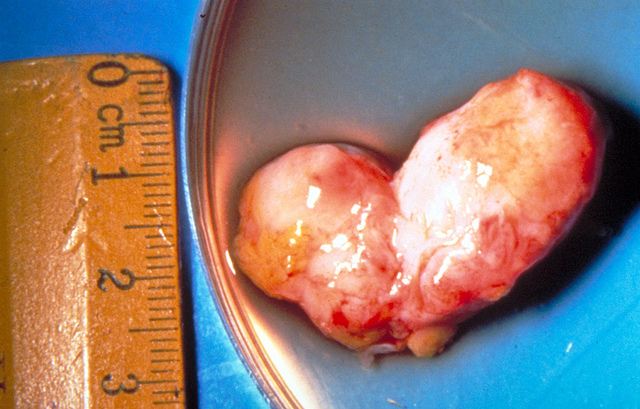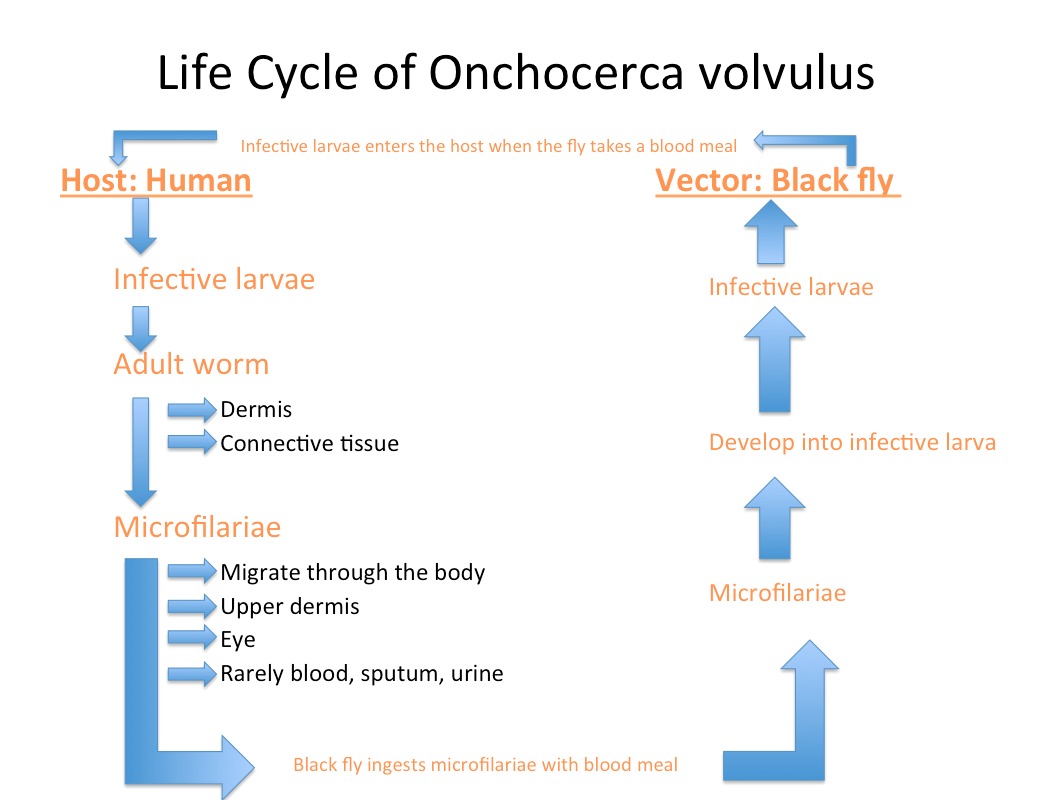Life History and Reproduction
Who first discovered Onchocerca volvulus?
 John O’Neill, an Irish surgeon, first found microfilaria in
subcutaneous tissue while examining a patient from Ghana in
1874. Nineteen years later, Patrick Manson identified the adult
worm and in 1893, a Zoologist named Rudolf Leuckart described
the morphology of the adult form of the worm. Then in 1904,
Emile Brumpt made the connection between the microfilaria in the
tissue and the adult worm. Brumpt also observed that the
infection of these worms tends to occur along riverbanks.
Rodolfo Robles then published this “new disease” in 1917. The
cause of Onchocerca volvulus was established by
Breadablane Blacklock, stating that the disease of
onchocerciasis is transmitted by sand flies (Cox 2014).
John O’Neill, an Irish surgeon, first found microfilaria in
subcutaneous tissue while examining a patient from Ghana in
1874. Nineteen years later, Patrick Manson identified the adult
worm and in 1893, a Zoologist named Rudolf Leuckart described
the morphology of the adult form of the worm. Then in 1904,
Emile Brumpt made the connection between the microfilaria in the
tissue and the adult worm. Brumpt also observed that the
infection of these worms tends to occur along riverbanks.
Rodolfo Robles then published this “new disease” in 1917. The
cause of Onchocerca volvulus was established by
Breadablane Blacklock, stating that the disease of
onchocerciasis is transmitted by sand flies (Cox 2014).
How does this parasite reproduce?
Onchocerca volvulus live in human hosts from 8-12
years, sometimes even up to 15 years and microfilariae can live
up to 2 years. The number of females is about doubled compared
to the male population. Adults can live in various places within
the human body and usually live in groups. The males can move
from group to group where they then impregnate the females
(Dalton 2001).

To attract males, the females can produce a chemical substance
and release it into their environment. The way the male
impregnates the female is by coiling around the female with his
curved area on the female genital pore. To hold the female
during sex, the male uses its spicules. The sperm of the
nematodes are amoeboid-like and do not have a flagella (Dalton
2001).
The fertilized eggs develop in 3-12 weeks into microfilariae.
Once developed, the female releases the microfilariae into the
host body. The species used as hosts are humans, Similium
damnosum, Simulium neavei, Simulium ochraceum, Simulium
metallicum, Simulium callidum, Simulium exiguum, and blackflies.
One female can reproduce for 9-11 years and can release
1300-1900 microfilariae per day (Dalton). The microfilariae then
travel away from the adults. They travel through blood vessels,
lymphatics, skin and connective tissue, and generally settle in
the skin. When the microfilariae die, they cause inflammation
which can also lead to skin rashes, lesions, skin coloration and
extreme itching. If the microfilariae get into the human eye and
cause complications it can lead to blindness (Life-cycle of
Onchocerca volvulus 2014).
reproduce for 9-11 years and can release
1300-1900 microfilariae per day (Dalton). The microfilariae then
travel away from the adults. They travel through blood vessels,
lymphatics, skin and connective tissue, and generally settle in
the skin. When the microfilariae die, they cause inflammation
which can also lead to skin rashes, lesions, skin coloration and
extreme itching. If the microfilariae get into the human eye and
cause complications it can lead to blindness (Life-cycle of
Onchocerca volvulus 2014).
The life cycle of the Onchocerca volvulus is very
complex. It involves both a definitive and intermediate host.
The human is the only natural definitive host, whereas the
intermediate host is a black fly, which is in the genus of
Simulium, very similar to the parasite
Plasmodium falciparun which is also transferred through an
insect, the mosquito. These flies, that can cause blindness, require
the oxygen that comes from quickly flowing river water. This is
why the disease onchocerciasis is commonly referred to as “river
blindness” (Truant 1998).
Life Cycle image modified from Swiss Tropical and Public Health Institute.
Discover who this parasite interacts with by going to the Interactions Page!